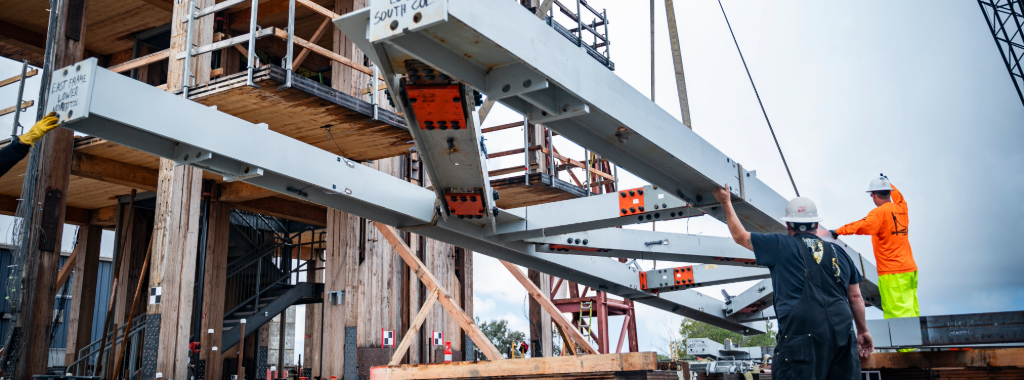As part of the Natural Hazards Engineering Research Infrastructure (NHERI) Converging Design project, Simpson Strong-Tie collaborated with several universities to perform a series of outdoor shake table tests on a six-story hybrid structural steel and mass timber structure at the University of California, San Diego (UCSD).
This project followed the NHERI TallWood project, also conducted at UCSD, which simulated a series of large earthquakes and their effects on a full-scale, 10-story mass timber building.

Simpson Strong-Tie supports this area of the construction industry, which is focused on developing solutions that can be utilized in geographic areas with high seismic activity. Through the TallWood project, we proved the efficacy of our mass timber connection systems in providing resiliency for multistory mass timber buildings. We extended this type of research with the Converging Design project.
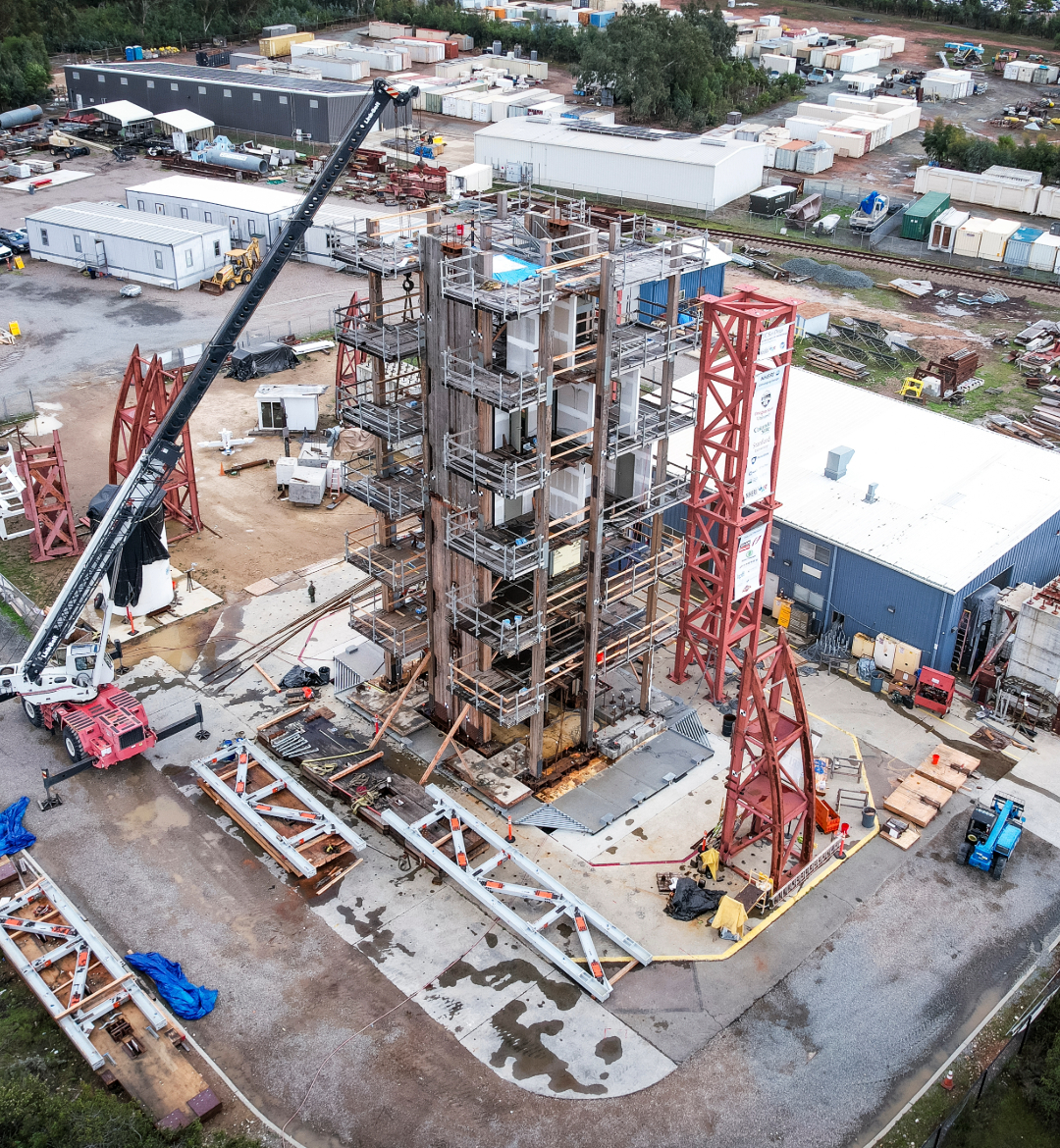
Both projects characterize our commitment to Barc Simpson’s Nine Principles of Doing Business. Principle No.1, Relentless Customer Focus, impels us to understand customer needs and opportunities, identify problems that are worth solving, then develop solutions. Principle No. 4, Be the Leader, drives us toward advancements that benefit the industry and society as a whole. Commercial and residential structures alike can be made more resilient to natural forces, and the Converging Design project contributed to a purposeful, greater good.
The vision of Converging Design was to create a new design paradigm within structural engineering to maximize functional recovery while integrating additional sustainable building design principles. Funded by the National Science Foundation (NSF), the research was led by Professor Andre Barbosa at Oregon State University with collaboration from researchers at Colorado State University, Stanford University and Penn State University.
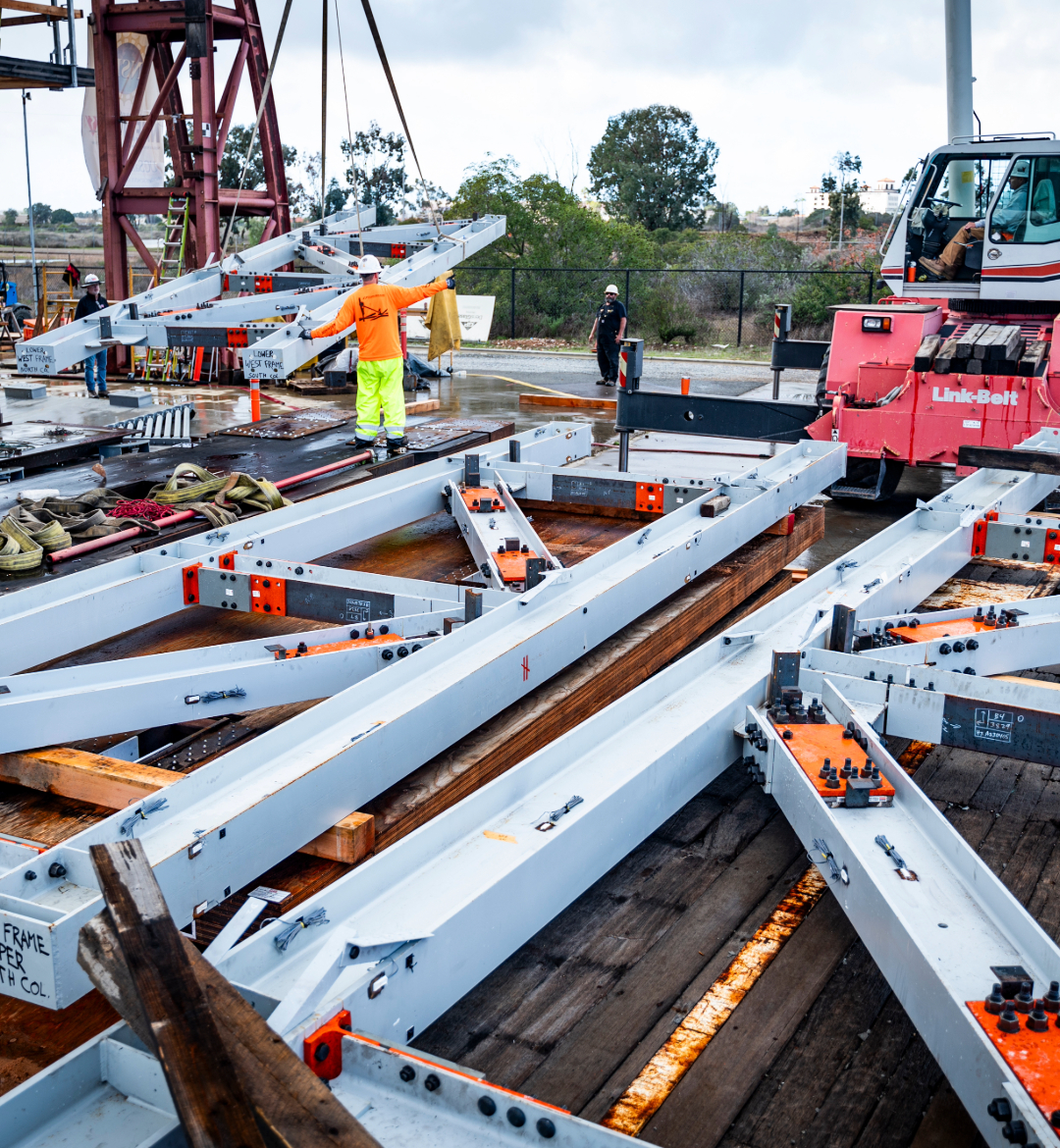
“We’re bringing not only our engineering performance objectives, but we’re also looking at sustainability, we’re looking at resilience, and trying to put that into the context of having affordable structures.” — Dr. Andre Barbosa, Professor, Oregon State University
Converging Design conducted a series of tests at the Englekirk Structural Engineering Center at UCSD, where the world’s largest outdoor shake table is located. The shake table tests simulated motions that were recorded during historic earthquakes, including the 1989 Loma Prieta earthquake.
Structural steel connections show their mettle
Among other structural steel solutions, we utilized our resilient six-story steel frame concept in the Converging Design project. This frame incorporated both the Simpson Strong-Tie® Yield-Link® moment connection and Yield-Link® brace connection, employing replaceable fuse technology as potential alternatives to post-tensioned rocking wall systems, to absorb inelastic demands and reduce residual drift.
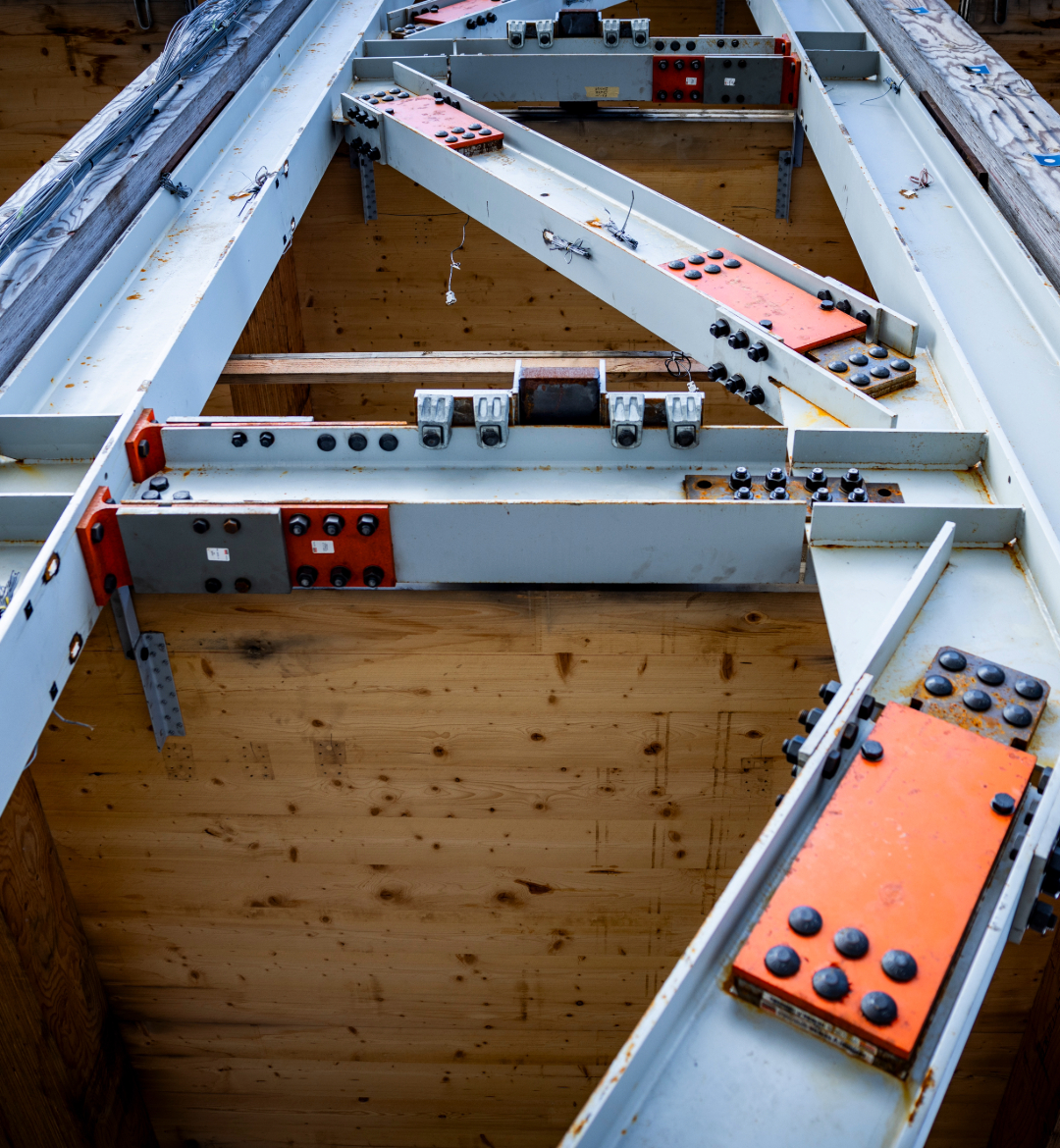
More specifically, we tested our resilient steel frame technologies by providing two complete six-story-tall frames to anchor the north-south direction of building movement, while the east-west direction was restrained with post-tensioned mass timber rocking shearwalls.
The project also integrated sustainable building methods using mass timber as a renewable resource with significant commercial and aesthetic benefits.
In addition to offering our structural engineering expertise, Simpson Strong-Tie specified and donated a wide range of our products, including mass timber fasteners, angled washers, diaphragm spline straps, cold-formed steel connectors and our anchor tiedown system rods. Furthermore, damage-proof connections were specifically engineered and developed for key locations in both the gravity and lateral systems.
“Not only did we not see collapse, we did not have any permanent drift in the building. Everything looked just as good as it did before.” — Steve Pryor, P.E., S.E., Senior Manager, Testing and Research Operations, Engineering, Simpson Strong-Tie
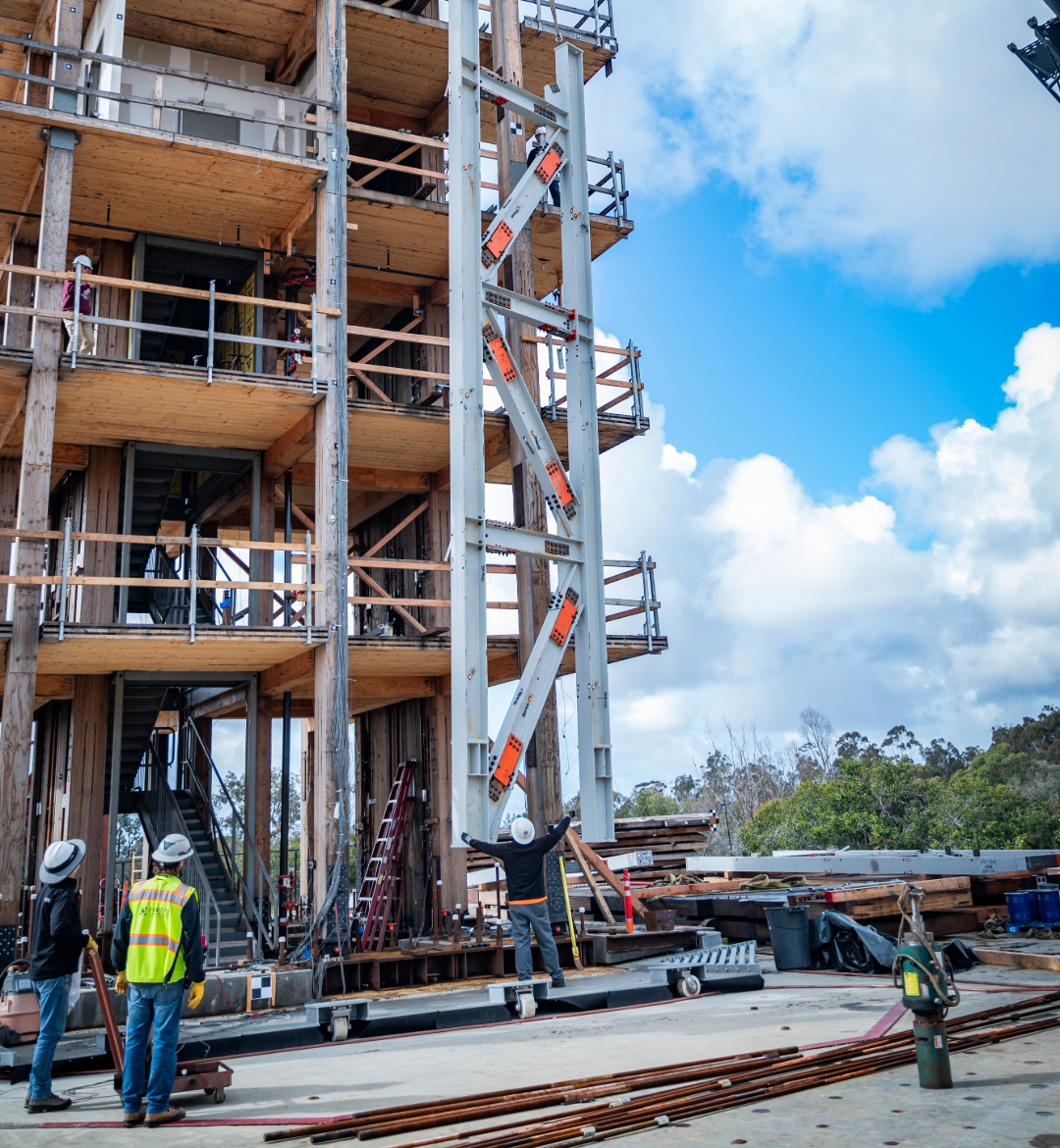
Risk-taking innovation for real-world solutions
Another longstanding pillar at Simpson Strong-Tie is Barc’s principle No. 7, Risk-Taking Innovation. With hundreds of engineers on staff, along with nine laboratories, we conduct rigorous engineering research and testing that often results in new solutions across a range of industry sectors and applications.
Our company mission is to help people design and build safer, stronger structures. Participating in Converging Design, along with TallWood and many other initiatives, reflects our commitment to industry leadership through collaboration, service and ongoing innovation for proven solutions. It’s who we are.
Learn more about the NHERI Converging Design project utilizing structural steel and mass timber solutions from Simpson Strong-Tie.

